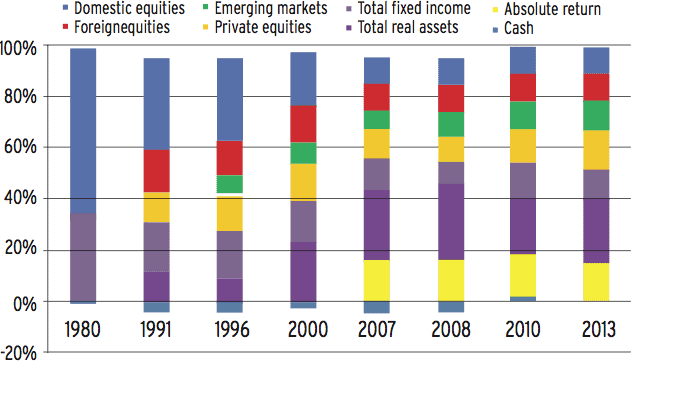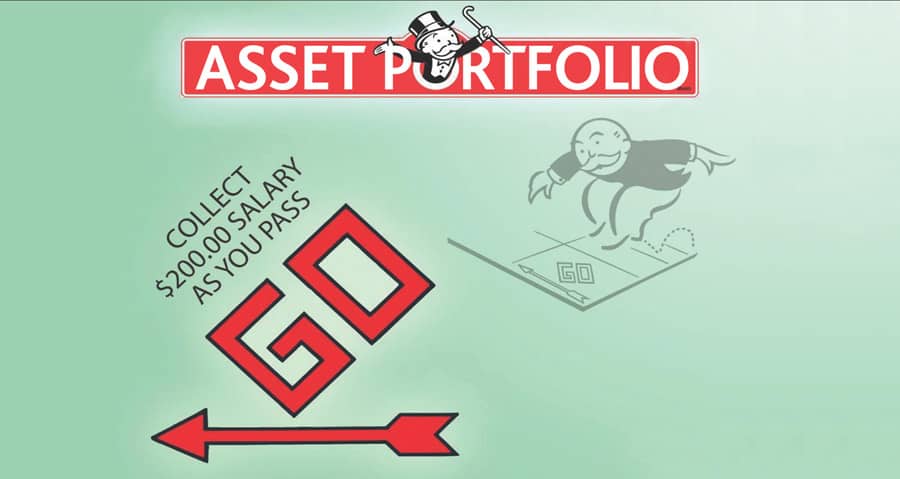Brian Flanagan explains the emergence of multi-asset portfolio funds and how asset classes evolve.
Different asset classes have been around for thousands of years, but it has only been in recent times that portfolios with multiple asset classes have been available to individual investors in one fund.
The history of asset classes is an interesting one. Real estate was an asset class long before stocks and bonds became the investment choice.
Kings, Queens, and Lords measured their wealth by the amount of property they owned. Currencies were traded in the Temple in Jerusalem in the early New Testament and commodities like corn and rice were used as currencies in Asia thousands of years ago.
Interestingly, stocks and bonds originated to support the financing needs of manufacturing enterprises, and only arrived in volume over the past 200 years as our economic society changed from one based on the ownership of property to one based on the ownership of legal entities. Society at the time was moving from an agricultural base to and industrial base.
Capital markets
Up until the early 1980s, real estate (your primary residence) were the major asset class of individual Irish investors. The opening up of the capital markets to individual investors, coupled with the long bull-run in equities starting in 1983, saw investors diversify their wealth into stocks and bonds.
In the 1980s, the life assurance and pension industry in Ireland developed managed funds which were a combination three assets classes. Typically, they are made up of 50% to 80% equities with some government bonds and property to make up the complete portfolio.
Managed funds became the staple of the typical Irish pension investor and by the late 1990s there were 15- 17 recognised pension funds available to investors in the Irish market. The managed funds were comparable both in their structure and in their performance, and business tended to flow to the highest performing fund.
Portfolio evolution
Multi-asset portfolios also started to appear in the early 1990s. In the US, they were quicker to add other asset classes to portfolios at the expense of equities and bonds.
The chart below shows how the Harvard Investment Company’s (now worth $30bn) fund evolved. You can see in 1980 the fund was primarily invested in equities and bonds; real estate, private equity, emerging markets and absolute return strategies were added over the years to build a more diversified portfolio.

Magnet Portfolio
In 2007, Friends First launched the Magnet Portfolio to get a fund offering all spectrum of asset classes in one fund.
Following the launch of the Magnet Portfolio, Friends First launched a lower and higher risk version of its multi-asset funds, called Magnet Stable and Magnet Adventurous.
Today, we have around €150m in funds in our multi-asset strategies, and other pension providers are following the trend with their own suite of multi-asset funds. The most popular fund is the Magnet Stable Fund which carries a risk rating of 4/7 on the ESMA risk rating scale.
Why investors like multi-asset portfolios
• They offer diversification across different investments and asset classes.
• They tend to fall less in value in extreme market downturns.
• More asset classes are included in one fund giving better portfolio diversification.
• Multi- asset portfolios are designed for different risk appetites.
• Asset mixes are controlled reviewed and rebalanced by a fund manager.
 Brian Flanagan is an investment sales manager with Friends First.
Brian Flanagan is an investment sales manager with Friends First.





